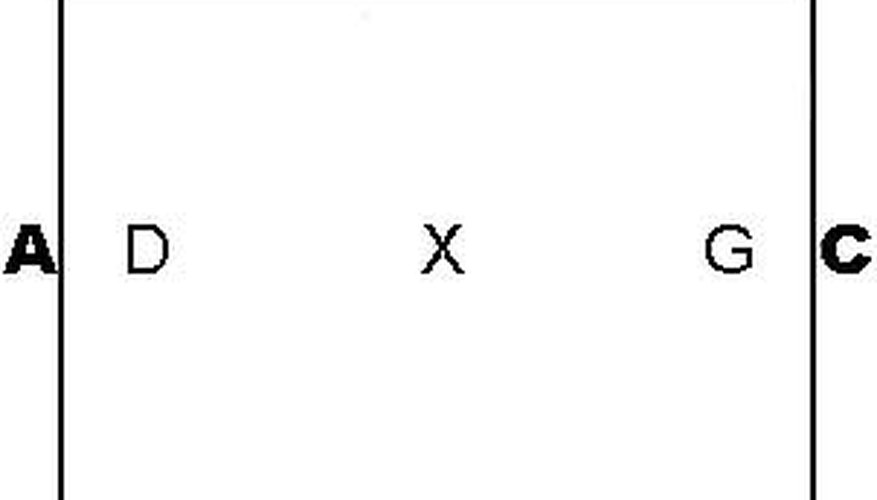The small version of a dressage arena is most often used for practice or for non-sanctioned dressage shows and one-day events.
Most private indoor arenas will accommodate the 20 by 40 meter dimensions (66 by 132 feet), and a small dressage arena, complete with letters, helps riders perfect the basic movements of a dressage test. An outdoor dressage arena can be set up on any flat area with good footing.
- The small version of a dressage arena is most often used for practice or for non-sanctioned dressage shows and one-day events.
- Most private indoor arenas will accommodate the 20 by 40 meter dimensions (66 by 132 feet), and a small dressage arena, complete with letters, helps riders perfect the basic movements of a dressage test.
Determine if your chosen area is large enough by measuring across the short side, and then down the proposed long side. The short side must be at least 66 feet (20 meters), and the long side must be at least 132 feet (40 meters).
Decide where your first corner stake will go, and hammer in a marker. This will be Stake 1. Short pieces of rebar, pointed lathe or short pieces of 1-by-2 inch lumber will work well for stakes.
Measure across the short end and set Stake 2. Don't worry about being square with the other corner. We will square up the rectangle after we have marked all the corners.
- Measure across the short end and set Stake 2.
Measure down the long side to the third corner and set Stake 3. If your tape measure is too short to stretch the entire distance, use interim stakes to mark where you left off and maintain the accuracy of your measurement.
Measure across the far short end to set Stake 4. Now we will square up the corners.
Measure diagonally across the arena from Stake 1 to Stake 3 and jot down the measurement.
- Measure diagonally across the arena from Stake 1 to Stake 3 and jot down the measurement.
Measure diagonally across the arena from Stake 2 to Stake 4.
Move the corner stakes in or out so that each diagonal line is equal to 148 feet. The accepted standard for dressage arenas is to round up the exact measurements in converting meters to feet (20 meters = 65.6 feet and 40 meters = 131.2 feet). Likewise, we have rounded the diagonal line from 147.58 to 148 feet even.
After evening up the diagonal lines, re-measure your short and long sides to ensure they are correct. A few inches either way is not critical.
Set the dressage letters used in small arenas as shown in the diagram, and in accordance with the measurements given below. D, X and G are not physical letters; all the rest will be placed around the outside of the arena.
Begin by placing A and C halfway along the short sides. Measure from corner to corner, and set a stake at the 33-foot mark (10 meters). This will be dead centre of your dressage letter. Since horses entering the arena do so at A, set this letter back a few feet to allow horses to turn between it and the arena, and start up the centre line.
- Set the dressage letters used in small arenas as shown in the diagram, and in accordance with the measurements given below.
- Since horses entering the arena do so at A, set this letter back a few feet to allow horses to turn between it and the arena, and start up the centre line.
Tie a long (at least 140 feet) string to Stake 2, and run it down to Stake 3. Stretch it tight and tie it off. This is the edge of your arena. Set your letters just touching the string on the outside so that they are lined up facing in. Do the same between Stake 1 and Stake 4 when setting letters on the other side of the arena.
Set E and B halfway down each long side as shown, at the 20-meter mark, or 65.6 feet.
Set H and M 6 meters (19.7 feet) from the end of the arena nearest C, and K and F 6 meters from the end of the arena nearest A, as shown.
Remove the stakes, string and any tools, and you're done laying out your standard dressage arena. It is not necessary to enclose an outdoor practice arena, but you may wish to mark your corners. Stakes, blocks or poles laid at right angles are all sufficient for the rider to spot the corner and avoid turning short.
